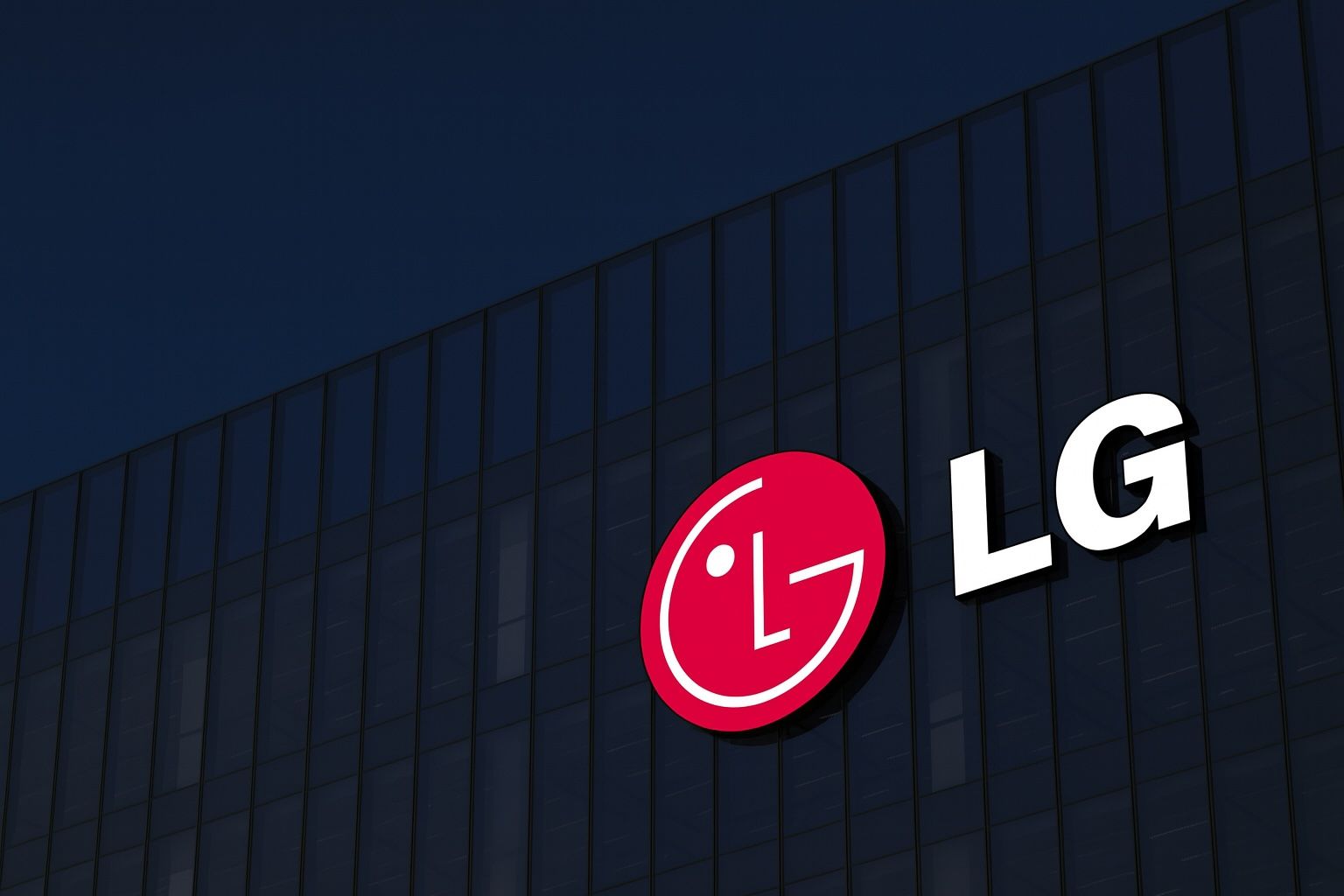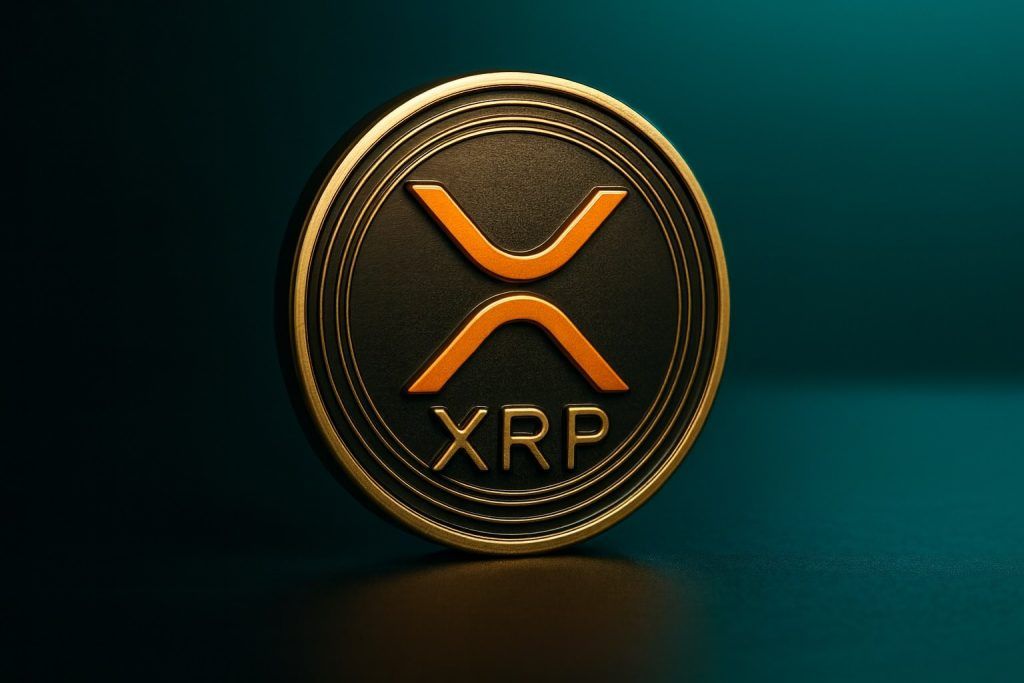- IPO Launch: LG Electronics India’s highly anticipated IPO opens on October 7, 2025 and closes on October 9, with a price band of ₹1,080–₹1,140 per share [1]. The ₹11,607 crore issue (about $1.4 billion) is entirely an offer-for-sale by the South Korean parent (no fresh issue), representing a 15% stake, and is set to list on stock exchanges on October 14, 2025 [2] [3].
- Grey Market Premium: Robust demand in the unofficial grey market signals a ~₹250 premium above the IPO price, implying a 22% potential listing gain over the upper band price [4]. As of Oct 6, grey-market trades around ₹1,390 per share (vs ₹1,140 issue price) hint at strong listing day performance [5].
- Market Leader in India: LG Electronics India is the market leader in India’s home appliances and consumer electronics sector (excluding mobile phones), holding the #1 position for the last four years [6]. It boasts dominant offline market shares across key product categories – e.g. washing machines (33.5%), refrigerators (29.9%), panel TVs (27.5%), air conditioners (20.6%), and microwaves (51.4%) [7] – far ahead of most competitors.
- Strong Financials: The company reported revenue of ₹24,367 crore in FY25, up ~14% year-on-year, with profit after tax of ₹2,203 crore [8]. Between FY23 and FY25, revenue grew at a CAGR of 10.8%, while net profit nearly doubled (27.8% CAGR) [9]. Profit margins have improved steadily (EBITDA margin rose to 12.8% in FY25, PAT margin ~9%) [10], and return ratios are best-in-class – FY25 Return on Equity ~37% and Return on Capital Employed ~50%, far above industry peers [11].
- Valuation: At the IPO upper price, LG India’s valuation is about 35–38 times FY25 earnings, which is cheaper than Indian peers like Havells (63x P/E) or Blue Star (66x) [12]. However, it far exceeds the valuation of its Korean parent: LG Electronics Inc trades around 14x earnings, and the Indian arm’s expected market cap (~₹77,380 crore) is nearly on par with the parent’s market cap (~₹82,500 crore) despite the parent’s much larger revenues [13]. This reflects the premium investors place on India’s growth story.
- Expert Endorsements: Analysts are largely bullish. SBI Securities and Choice Broking have both assigned “Subscribe” ratings, citing LG’s dominant market share, innovation, and deep distribution network [14] [15]. Brokers highlight that the issue is priced reasonably given LG’s superior return profile and category leadership, and they see strong growth visibility in India’s booming consumer durables market [16].
- Sector Outlook: India’s home appliances and consumer electronics market is projected to grow to ₹10,965 billion by 2029, up from about ₹6,875 billion in H1 2025 [17]. Rising incomes, urbanization, and demand for premium products are driving expansion [18]. LG India, with its broad product portfolio and 35,000+ retail touchpoints nationwide, is well positioned to capitalize on this growth [19].
- Risks: Prospective investors should note key risk factors. LG India depends on its parent for technology (and pays royalties), with a contingent royalty-related liability (₹3,153 million per RHP) under tax review [20]. The company faces large outstanding tax claims (~₹4,717 crore), equivalent to 73% of its net worth, which could impact finances if resolved unfavorably [21]. Additionally, over 78% of revenue comes from four product categories (appliances & air solutions) [22], and supply-chain concentration is a concern (top 10 suppliers provide 32% of raw materials) [23]. As the IPO is 100% OFS, none of the funds will go to the company for growth investments [24], and investors are essentially buying into the existing business momentum and future prospects.
IPO Overview and Issue Details
LG Electronics India’s maiden IPO will hit the capital markets on October 7, 2025, marking one of the largest stock listings of the year. The issue will remain open for subscription until October 9, and the stock is slated to debut on the NSE and BSE on October 14, 2025 [25]. The offering comprises 10.18 crore shares (15% of equity) being sold by the promoter, LG Electronics Inc. of South Korea, via an Offer For Sale (OFS) [26]. With a price band set at ₹1,080–₹1,140 per share, the IPO is expected to raise about ₹11,607 crore at the upper end [27]. Notably, no new shares are being issued, so all proceeds will go to the parent company, and the listing’s primary objective is to provide a trading market for LG India’s shares [28]. Post-issue, the Korean parent will retain an ~85% stake.
The sheer size of the IPO underlines its significance. At ~$1.4 billion, it is one of 2025’s biggest IPOs and a milestone debut for a foreign multinational’s Indian subsidiary [29]. In fact, it ranks as the second-largest offering by any Korean company in India, only behind Hyundai’s listing [30]. The timing coincides with a bustling week on Dalal Street that features several high-profile IPOs (including Tata Capital’s), collectively raising tens of thousands of crores, indicating robust investor appetite for new issues this year.
Investors’ entry points: Retail investors can bid in lots of 13 shares, requiring a minimum investment of about ₹14,820 at the upper price [31]. The share allocation will be finalized by October 10, and any refunds or demat credits processed in time for the listing on October 14. Given that the IPO is an OFS, the company will not receive any capital for its expansion; the sale is essentially a partial exit by the parent firm and a chance for Indian investors to own a piece of the well-known consumer durables brand [32].
Grey Market Buzz Signals Strong Debut
Anticipation for the LG Electronics India IPO has been running high in the grey market, an unofficial indicator of listing day enthusiasm. Ahead of the opening, unlisted shares of LG India have been quoting at ₹1,380–₹1,400 apiece in grey market trading, which is roughly ₹250 above the IPO price [33]. This ~₹250 grey market premium (GMP) translates to an upside of about 21–22% over the IPO price, implying a potential listing price in the vicinity of ₹1,390–₹1,400 if sentiments hold [34].
Such a double-digit GMP is a positive signal, reflecting strong investor demand and optimism for the stock’s debut. Market observers note that the grey market buzz indicates “potential 22% listing gains” for LG India [35]. By October 6, the last reported GMP of ₹251 suggested a listing around ₹1,391 – a hefty pop for a large-cap issue [36]. This is notable because mega-sized IPOs often see more muted grey market activity, but LG’s brand and business strength seem to be fueling exceptional interest even at a hefty ₹77,000+ crore valuation.
Analysts caution that grey market premiums are speculative and can fluctuate, but they underscore the positive sentiment surrounding the issue. The healthy GMP for LG comes alongside upbeat commentary from brokerages (many of which have recommended subscribing, as discussed below) and coincides with broadly buoyant equity markets. It’s also worth noting the broader context: the Indian IPO market is in a bullish phase, with investors pouring into high-quality offerings. LG Electronics India’s IPO, given its scale and strong fundamentals, has emerged as a star attraction in this IPO wave.
Company Profile: A Consumer Durables Giant in India
LG Electronics India is the Indian subsidiary of LG Electronics Inc., and it has been a household name since its entry into the country in 1997 [37]. Over the past 28 years, LG India has grown into one of the top consumer durables companies, offering a wide range of products from refrigerators, washing machines, and air conditioners to smart televisions and kitchen appliances. The company’s slogan “Life’s Good” resonates with millions of Indian consumers who use its products in daily life.
Today, LG India is widely recognized for its market leadership and expansive presence. According to industry data, it has been the number one player in India’s home appliances and consumer electronics market (excluding mobiles) for four consecutive years up to the first half of 2025 [38]. It leads key product segments by a comfortable margin. For instance, LG commands roughly one-third of the washing machine market (33.5% share) and about 30% of refrigerator sales by value [39]. In panel televisions, it accounts for 27.5% share, and in microwave ovens over 51% (in the offline retail channel) [40]. Even in the highly competitive air conditioner space, LG (with ~20.6% share) is among the leaders [41]. These figures underscore LG’s dominance across a spectrum of appliances, often outperforming well-known local peers like Havells, Voltas, Blue Star, and Whirlpool of India in market reach.
A major strength contributing to this leadership is LG’s vast distribution and service network. The company prides itself on having the largest pan-India sales network among appliance makers [42]. As of June 30, 2025, LG India had 35,640 consumer touchpoints – spanning its own LG-branded stores, big national retailers (Reliance Digital, Croma, Vijay Sales, etc.), e-commerce channels, thousands of traditional dealers, and sub-dealers across urban and rural areas [43]. This extensive last-mile reach ensures LG products are available in virtually every corner of India, giving it a competitive edge in both metros and smaller towns. Complementing sales is a robust after-sales service infrastructure: the company operates over 1,000 service centers with a fleet of 13,000+ service engineers, capable of providing speedy installations and maintenance support [44]. In FY24 alone, LG India handled over 6 million service requests, all resolved within the year [45] – an indicator of its commitment to customer service quality. This omni-channel presence and service support network reinforce LG’s brand loyalty and are critical in a market where reach and reliability are key purchase drivers.
Additionally, LG India benefits from strong manufacturing capabilities in-country. It runs two large manufacturing plants (in Noida and Pune) where it produces a significant majority (85%+) of the products it sells in India [46]. This localised production not only helps control costs and ensure quality, but also allows LG to tailor products to Indian consumer needs quickly. In fact, LG has a track record of innovation adapted to local tastes – for example, it was the first to introduce inverter-based OLED TVs in India, 4K smart TVs as early as 2011, and inverter technology in appliances like ACs and microwaves [47] [48]. Backed by the R&D might of its Korean parent, LG India has frequently rolled out “industry-first” features in the country, giving it a reputational edge among tech-savvy consumers.
Financial Performance Highlights
LG Electronics India’s financial track record has been impressive, marked by steady growth and high profitability. The company has expanded at a healthy pace in recent years: revenue grew from ₹19,865 crore in FY23 to ₹24,367 crore in FY25 [49], which represents a ~10.8% compound annual growth. This growth has been accompanied by even faster profit expansion – net profit after tax (PAT) rose from ₹1,345 crore in FY23 to ₹2,203 crore in FY25, nearly a 64% increase overall [50]. The PAT compounded growth rate (~27.8% per year) far outpaced revenue growth, reflecting improving margins and cost efficiencies.
Indeed, LG India’s profitability metrics have strengthened. EBITDA margins improved from about 9.6% in FY23 to 12.8% in FY25, and PAT margin expanded from 6.8% to roughly 9.0% in the same period [51]. These are excellent margins for a consumer electronics hardware company, exceeding most peers’ performance. For context, in FY24 the average net profit margin for comparable Indian appliance companies was around 4.5%, which LG more than surpassed [52]. The company’s ability to maintain double-digit operating margins is partly due to its scale and efficiencies – for example, LG has a lean working capital cycle (just ~16 days of net working capital, versus an industry average of ~26 days) [53], and it sources many components locally or from established long-term suppliers [54], which helps control costs. Furthermore, LG India carried virtually no debt on its books as of June 2024 [55], and had a strong cash position, indicating that it has grown largely through internal accruals and prudent financial management.
Looking at the latest reported numbers, there was a slight moderation in Q1 FY26 (April–June 2025) results: revenue for that quarter stood at ₹6,263 crore, down about 2.3% year-on-year, and quarterly profit was ₹513 crore, about 25% lower than the same period in the previous year [56]. This dip was attributed to a high base and some margin pressure (the Q1 FY26 EBITDA margin was 11.4%, down ~3.5 percentage points YoY) [57]. However, analysts view this as a temporary blip rather than a trend, given that consumer demand in India was somewhat soft in early 2025 but is expected to rebound with the festive season and ongoing economic recovery. Over a longer horizon, LG’s multi-year growth remains solid, and the company has consistently delivered strong return ratios that underscore its efficient business model.
Notably, return on capital employed (ROCE) and return on equity (ROE) are standout metrics for LG India. In FY24, LG delivered a ROCE of 45.3% and ROE around 40%, which are extraordinarily high in this industry [58]. Even in FY25, after raising equity capital in the IPO calculations, the company’s ROE was about 36.9% and ROCE 50.1% according to brokerage analysis [59]. By comparison, most listed peers have ROEs in the mid-teens or lower – for instance, in FY25 Havells India’s ROE was ~17.7%, Voltas 12.9%, Blue Star 19.3%, and Whirlpool of India 9.1% [60]. Such superior returns indicate that LG India has been able to deploy capital very effectively, likely due to its strong brand pull (which allows decent pricing power), tight cost control, and asset-light distribution (many sales through dealers rather than own stores).
Another point demonstrating financial strength is LG’s ability to generate cash. The company’s operations are not working-capital heavy (thanks to fast inventory turnover and payable terms), and it has been funding expansion largely from internal cash flows. As of June 2024 it held ₹3,606 crore in cash on its balance sheet [61], providing a cushion for future investments or dividends. However, investors should note that LG India has been paying significant royalties and dividends to the parent – for example, in one quarter alone it paid ₹121 crore in royalty fees [62]. These outflows are part of normal operations (for use of LG’s brand and technology), but they do mean a chunk of earnings is upstreamed to the parent.
Overall, LG Electronics India enters the public market with a profile of high growth and high profitability – a combination that many companies in the consumer manufacturing space struggle to achieve simultaneously. Its financials suggest that the business is past heavy investment mode (plants, distribution network are in place) and is now a cash-generating franchise, poised to benefit as consumer demand rises.
Valuation: Comparing with Peers and Parent
The pricing of the LG Electronics India IPO has been a talking point among investors, especially in relation to both domestic peers and the global parent company’s valuation. At the top-end price of ₹1,140 per share, LG India is valued at approximately ₹77,380 crore in market capitalization [63]. This equates to a price-to-earnings (P/E) multiple of about 35.1 times FY25 earnings (based on FY25 PAT of ₹2,203 cr) [64] [65]. Many analysts consider this P/E reasonable to attractive in the context of Indian consumer appliance stocks. For instance, Emkay Global noted that LG’s implied P/E of ~35x is much lower than the multiples at which established competitors like Havells (63x) or Blue Star (66x) trade [66]. Even Whirlpool of India, despite its smaller size and profits, has historically traded at lofty valuations (50-60x earnings). By coming to market at a more modest multiple, LG India appears to be leaving some upside for IPO investors, which is likely a deliberate move to ensure a successful sale.
Beyond P/E, LG’s other valuation metrics also look favorable versus peers. LG’s return on equity and capital are significantly higher than peers (as discussed earlier), meaning investors are getting more bang for each rupee of capital in the company. Brokerages have highlighted that on metrics like RoE, RoCE, and margins, LG “outshines them (peers) in most valuation parameters with superior return profile” [67]. For example, at listing, LG’s enterprise value-to-EBITDA ratio is expected to be in the mid-20s, which is not cheap in absolute terms but still below some peers that trade above 40x EV/EBITDA due to smaller earnings bases. The relatively tempered valuation, combined with LG’s market dominance, is a key reason many analysts are comfortable recommending the issue.
However, the valuation story has another fascinating angle: LG India vs. LG Electronics (South Korea). Despite being a subsidiary with roughly one-third the revenue of the parent, LG Electronics India is poised to command a market cap nearly equal to its parent company. The Korean parent’s market cap is around ₹82,500 crore (₩ around 13.6 trillion), which LG India almost matches at ₹77,000+ crore [68]. Moreover, LG Electronics Inc. trades at a P/E of roughly 13–14x earnings, far below the ~35x multiple that the Indian unit is seeking [69]. In other words, the Indian arm’s shares are being offered at a valuation nearly 3 times richer than the global parent’s. This might seem counterintuitive since the parent is a much larger business with diversified global operations (LG Electronics Inc. had revenue of ~₹82,500 crore in 2024, versus ₹24,367 crore for LG India in FY25) [70].
Yet, this kind of divergence is not unusual on Dalal Street – it actually “exemplifies an often-seen trend” where Indian subsidiaries of multinationals enjoy far higher valuations than their parents [71]. Investors are effectively paying a premium for the India growth story, confident that the subsidiary will grow faster and more profitably in the Indian market than the parent company can globally [72]. The Economic Times notes at least a dozen examples of this pattern across sectors. For instance, Hindustan Unilever (Unilever’s India arm) trades at a P/E of ~56, compared to just ~17 for Unilever PLC in London [73]. Nestlé India commands a multiple of over 70, versus under 18 for Nestlé SA [74]. ABB India is valued around 59x earnings vs 27x for ABB globally, and Cummins India around 55x vs just 15x for Cummins Inc [75]. In some cases, the Indian unit’s market cap even overtakes the parent’s – the classic example being Maruti Suzuki India, which at times has exceeded Suzuki Motor Corp’s market cap despite Suzuki’s far larger sales [76].
For LG, the high valuation of the Indian arm underscores the optimism about India’s consumer boom and LG’s pivotal position in it. Investors may be valuing LG India more like a branded consumer goods company (which get premium multiples) than a manufacturing company, given its strong brand equity and retail reach. It’s also a bet that LG India will continue to expand margins and outpace its parent in growth, benefiting from India’s rising middle class and urbanization trends. Nonetheless, some value-conscious investors might question paying ~35x for the IPO when LG’s parent stock (which an investor could technically buy in Korea) is much cheaper. Market experts counter that the growth trajectories are different – LG India can potentially grow revenue at low double digits with high teens profit growth in coming years, whereas the Korean parent, being larger and in mature markets, may see slower growth. Moreover, the parent’s stock can be weighed down by global factors and conglomerate structure, whereas the Indian unit is a pure play on India’s consumer appliance demand.
In summary, LG Electronics India’s IPO is priced at a premium to its parent but a discount to its local peers, striking a middle ground that appears to have been well-received by the market (judging by the grey market and subscription indications). The valuation reflects both LG India’s strengths and India’s attractiveness. It’s a reminder that in emerging markets, investors often “pay up” for growth and market leadership, especially when backed by a reputable global brand.
What Analysts and Brokers Say
The sentiment among brokerage houses and financial advisors regarding the LG Electronics India IPO has been predominantly positive, with many urging investors to subscribe. SBI Securities, for example, lauded LG India’s fundamentals, highlighting its dominant market position across multiple categories, robust financial track record, and large-scale manufacturing & distribution capabilities. The brokerage emphasized that LG’s IPO valuations are cheaper than peers and backed by superior returns, noting the company “outshines them (peers) in most valuation parameters” and hence recommended investors to “SUBSCRIBE to the issue.” [77] [78]. In SBI’s view, the combination of market leadership and reasonable pricing makes it an attractive proposition for both short-term listing gains and long-term investment.
Another firm, Choice Broking, echoed this bullish stance. Choice’s analysts pointed out that LG Electronics India is the clear number one offline player in major home appliance categories and has an unparalleled reach in the Indian market [79]. They believe this competitive edge, along with a culture of innovation and strong after-sales service, will enable LG to sustain growth. Choice Broking also issued a “Subscribe” recommendation, arguing that the company’s established brand and financial strength provide confidence in its future prospects [80] [81].
Market commentators have also drawn attention to LG’s growth prospects in new areas, which add to the investment appeal. For instance, LG India has plans to expand further into B2B segments like commercial air-conditioning (HVAC systems), LED lighting solutions, and even electronic display boards for education and offices [82]. These are high-growth niches in India as infrastructure modernizes. Analysts feel that leveraging the LG brand in these segments could unlock incremental revenue streams and diversify the business beyond consumer retail products. The Red Herring Prospectus (RHP) mentions strategies such as targeting the premium end of the market and filling gaps in the product portfolio (for example, introducing products in price segments where LG isn’t present yet) [83], which could help it capture aspirational customers upgrading their appliances. “The company is well-positioned to capture the opportunity given its leading market standing, pan-India network, strong brand, and high-quality products,” the RHP notes [84].
Many experts also cite the macro opportunity: India’s appliance and electronics market is still underpenetrated in categories like dishwashers, dryers, large smart TVs, etc., and rising disposable incomes are likely to drive multi-year growth in this sector. Brokerage reports unanimously highlight that the industry is projected to grow substantially by 2029 (to nearly ₹11 trillion size) [85], and that LG, with its 28-year operating history in India, is poised to benefit disproportionately from this surge. As SBI Securities put it, LG’s “strong growth visibility, innovation pipeline, and deep distribution network” underpin its investment case in a booming sector [86].
It’s worth noting that a few analysts have offered tempered views, mainly around the short-term risks. For example, some point out that the IPO’s success largely rewards the parent (since it’s an OFS), and new investors are not getting a stake in a company that’s raising fresh capital for expansion. This means LG India’s future growth must come from internal accruals and existing cash, or perhaps debt, since no new money is coming in from the IPO. Additionally, there is the question of how the stock will perform after the initial euphoria – at 35x earnings, it needs to keep delivering strong growth to justify the valuation in the secondary market. If margins were to compress due to input cost inflation or if competition intensifies (e.g., a resurgent Samsung or aggressive Chinese brands in appliances), earnings growth could slow. These are scenarios that some cautious voices mention, though they are not deterring the majority from a positive call on the IPO.
On balance, the expert consensus leans clearly in favor of the LG Electronics India IPO. The combination of a globally recognized brand, local market dominance, strong financials, and a valuation that leaves room for upside has led many to conclude this is one of the more compelling large-cap IPOs in recent times. The “Subscribe” calls from multiple brokerage houses reflect confidence that the stock could yield decent listing gains as well as serve as a solid long-term portfolio addition, particularly as a proxy for India’s consumer durables growth.
Industry Outlook: Riding India’s Consumer Boom
LG’s IPO comes at a time when the outlook for India’s consumer electronics and home appliance sector is highly optimistic. India is one of the fastest-growing markets for appliances, driven by a confluence of favorable factors. According to market research (Redseer and others), the demand for home appliances and consumer electronics in India is expected to swell from about ₹6.9 trillion in mid-2025 to around ₹10.96 trillion by 2029 [87]. That represents a robust growth trajectory over the next 4-5 years. Several dynamics are fueling this boom:
- Rising Middle Class & Incomes: Millions of Indian households are entering the middle-income bracket each year, boosting discretionary spending. Items that were once considered luxuries – like large LED TVs, automatic washing machines, or double-door refrigerators – are increasingly becoming necessities for urban families. As incomes rise, consumers are upgrading to higher-end models and purchasing additional appliances, directly benefiting companies like LG.
- Urbanization and Housing: India’s rapid urbanization means more nuclear families setting up homes in cities, which increases demand for home appliances. Additionally, government initiatives like affordable housing and electrification of rural areas expand the potential customer base for basic appliances (fans, coolers, small refrigerators, etc.) in semi-urban and rural markets.
- Premiumization Trend: There is a clear trend towards premium products in the Indian market. Consumers show growing preference for feature-rich, energy-efficient appliances – for example, inverter ACs and refrigerators, 4K and OLED televisions, smart Internet-connected appliances, etc. LG, being an innovation leader, is well-positioned to cater to this premium segment and command better margins. The company’s strategy, as noted in its RHP, is to continue focusing on the premium category to maintain its edge with aspirational consumers [88].
- Replacement and New Categories: The replacement cycle for many appliances is shortening. A wave of first-time buyers in the early 2010s is now coming back for upgrades. Additionally, relatively new product categories (dishwashers, air purifiers, smart home devices) are gaining traction. LG’s broad portfolio (and ability to leverage global LG innovations) allows it to play in emerging segments quickly.
- Government Policies: The Indian government’s push for manufacturing (Make in India/PLI schemes) and higher import duties on finished electronics encourage local production. LG’s existing local manufacturing base gives it a cost advantage and potentially easier compliance with any localization norms. Also, energy labeling standards and consumer awareness push people towards branded, efficient appliances – an arena where LG excels.
Industry observers thus forecast healthy volume and value growth for durable makers. The CAGR for the sector is projected in high single digits to low double digits through 2029 [89]. Within this, companies with strong brands and distribution like LG could capture outsized share. There is also scope for export growth if LG India leverages its manufacturing to serve neighboring markets or other regions.
However, the industry is not without challenges. Competition is intense, with global rivals (Samsung, Panasonic, Haier, etc.) and aggressive Indian players (like Voltas-Beko in appliances or newer entrants) vying for market share. Price-sensitive consumers mean that any economic slowdown can impact demand for big-ticket items. Also, input cost inflation (e.g., for commodities like steel, copper, plastics) can pressure margins industry-wide if not passed on.
On balance, the macro narrative remains in favor of growth, and LG’s IPO is timely to capitalize on this narrative. Investors looking at LG are essentially betting on the long-term consumption story of India, which has so far proven rewarding in many sectors (FMCG, autos, etc.). If India’s economy continues on its current trajectory, the home appliance penetration and upgrade cycle will likely ensure companies like LG have a growing market for years to come.
Key Risks and Challenges
While LG Electronics India has much going for it, potential investors should be mindful of certain risk factors and challenges that could impact the company’s performance post-listing:
- Dependence on Parent & Royalty Payments: LG India’s success is closely tied to its parent, LG Electronics Inc. The Indian arm relies on the parent for technology licenses, R&D, product designs, and the use of the “LG” brand. For these, it pays significant royalties (around 1.5–2% of revenue) to the parent [90]. Any strain in the relationship or adverse changes in royalty terms could hurt LG India’s margins. In fact, the company’s filings flag a contingent liability of about ₹3,153 million related to royalty payments under review, which could become payable depending on tax authorities’ decisions [91]. Furthermore, LG India operates under certain framework agreements with the LG group for services and sourcing, which are terminable on short notice [92]. A termination or renegotiation of these agreements could disrupt operations or raise costs.
- Tax Liabilities: LG India is facing several tax disputes. Outstanding tax claims amount to ₹4,717 crore (over $570 million), which is roughly 73% of the company’s net worth as of June 30, 2025 [93]. These include cases related to customs duties, VAT, income tax, etc., some of which are under appeal. If these disputes resolve against the company, it could result in hefty payouts or provisions, impacting profitability and cash flows. The company has cautioned in its prospectus that it cannot assure all such claims will be decided in its favor [94].
- Concentrated Product Mix: LG India’s revenue is heavily skewed towards a few product categories. About 78% of sales come from the Home Appliances and Air Solution division (essentially refrigerators, washing machines, ACs, and related products) [95]. While these are LG’s strengths, over-reliance on them means that a downturn in consumer preference or a technological disruption in any of these product lines could disproportionately hurt the company. For example, if a new competitor aggressively undercuts in ACs or if there’s a saturation in fridge demand, LG would feel the pinch. The company does have other segments (like televisions, audio, commercial electronics), but those too face strong competition.
- Supplier and Supply Chain Risks: Electronics manufacturing depends on a steady supply of components, many of which are imported or sourced from select suppliers. LG India’s top 10 suppliers account for about 32% of its raw material procurement [96]. Any disruptions with these key suppliers – due to geopolitical issues (e.g., trade restrictions with China, where many components come from), supply shortages (like the semiconductor crunch seen recently), or supplier financial problems – could impact LG’s production. The company does have 200+ suppliers overall and longstanding relationships (average 13 years) with many [97], which helps mitigate risk, but concentration still exists for certain critical parts.
- Competition and Innovation: In the fast-evolving consumer electronics space, staying ahead on innovation is crucial. LG faces competition not just from traditional rivals but also new-age tech-driven companies (for instance, IoT-based appliance startups, or global giants introducing smart home ecosystems). If LG India ever lags in technology – say, slower adoption of AI in appliances or missing a trend like smart connected kitchens – it could lose its premium positioning. So far, LG has been proactive on this front, but it’s an ongoing challenge. Moreover, competition on price, especially from value-focused brands, can pressure LG at the lower end of the market.
- Macro and Currency Factors: As a manufacturer, LG is exposed to commodity price fluctuations (metals, plastics, etc.). A surge in input costs can squeeze margins if the company cannot pass on the increases immediately due to market competition. Additionally, since some inputs are imported, currency exchange rate volatility (e.g., a weaker rupee making imports costlier) can affect costs. Macroeconomic slowdowns, high inflation, or interest rate hikes that cut consumer spending can also impact demand for big-ticket appliances.
- No Fresh Capital from IPO: Since the IPO is purely an OFS, LG India will not receive any infusion of funds from it [98]. This means the company’s growth investments (new product lines, capacity expansion, marketing push, etc.) will have to be funded by its own profits or borrowing. While LG is currently cash-rich and debt-free, it won’t have the extra war-chest that many companies enjoy post-IPO. Investors should set expectations accordingly: the IPO is more about sharing in the company’s existing success than about fueling new growth with IPO money.
In sum, LG Electronics India is a strong company but not without vulnerabilities. Prospective shareholders should weigh these risks. Many of these challenges are common to industry peers as well, but LG’s brand strength and parent support might give it more resilience. The disclosure of such risks in the prospectus and media indicates that the company is aware and is working to manage them (for example, diversifying products, localizing sourcing, legal defenses for tax cases, etc.). Nonetheless, prudent investing calls for keeping an eye on how these factors evolve in the coming quarters.
Conclusion
The LG Electronics India IPO represents a landmark moment in India’s equity markets – the listing of a globally renowned consumer electronics brand’s local arm, at a time when the country’s consumption story is in full swing. The IPO has garnered considerable buzz, evidenced by strong grey market premiums and enthusiastic analyst endorsements. On fundamentals, LG India offers a compelling mix of market leadership, strong financial performance, and participation in a high-growth sector. It has decades-long brand trust in India, formidable distribution might, and the backing of a technology powerhouse parent, all of which position it strongly among listed peers.
Crucially, the issue’s pricing appears to balance investor interests: at ~35x earnings it is not cheap in absolute terms, but it leaves upside relative to often richly valued domestic peers. As experts note, investors are effectively buying a stake in India’s consumer future through a proven player [99]. The fact that the Indian subsidiary can command valuations rivaling the parent speaks to the confidence in India’s growth trajectory [100]. As the Economic Times succinctly put it, LG’s IPO “brought to the fore” the trend of Indian arms of MNCs getting richer valuations, reflecting conviction in India’s faster economic growth [101].
However, success in the stock market will, in the long run, hinge on execution. Post-listing, LG India will be judged on how it sustains its growth, defends its market share from hungry competitors, and navigates the risks outlined. Investors will also watch how the relationship with the parent evolves (since the parent will still own 85% and decisions like royalties, technology transfer, and use of cash will be influenced by the parent’s strategy). So far, the arrangement has been mutually beneficial – LG India gets world-class products and the parent gets a profitable growing unit – and the public listing could further incentivize performance transparency and shareholder returns (dividends, etc.).
For now, the IPO is set to make a splash with likely strong subscription numbers and a head-turning debut if grey market indications hold true. A successful listing for LG would not only reward its new investors but could also boost market sentiment for other upcoming IPOs, reinforcing the narrative that India’s equity market is ready to embrace large issuances from quality companies.
In conclusion, LG Electronics India’s IPO has all the ingredients of a blockbuster – a trusted consumer name, solid fundamentals, a touch of scarcity (first-of-its-kind listing in its segment), and the allure of India’s growth premium. As always, investors should do their due diligence and consider their risk appetite, but if the expert commentary is any guide, “Life’s Good” might also describe the experience of those jumping on the LG India bandwagon. With prudent risk management and continued innovation, LG India could well justify the hype and deliver long-term value, making it a noteworthy addition to one’s portfolio in the consumer sector.
Sources:
- Moneycontrol – LG Electronics India IPO: How does the consumer electronics player compare to peers? [102] [103] [104] [105]
- Moneycontrol – Should you subscribe to LG Electronics India IPO? Cheaper valuation, superior returns, market leadership [106] [107] [108] [109]
- Economic Times – Indian arms strike richer valuations than their global parents [110] [111]
- Economic Times – LG Electronics IPO GMP hints at double-digit returns. Should you subscribe? [112] [113] [114] [115]
- Business Standard – Investing in LG Electronics IPO? Don’t miss these risks, strengths from RHP [116] [117] [118] [119]
- Financial Express – LG Electronics India IPO: Making “Life’s Good” for your portfolio? [120] [121] [122] [123]
- Additional data sourced from the Red Herring Prospectus (RHP) and analyst reports as cited above.
References
1. www.moneycontrol.com, 2. www.moneycontrol.com, 3. m.economictimes.com, 4. m.economictimes.com, 5. www.business-standard.com, 6. www.moneycontrol.com, 7. www.moneycontrol.com, 8. www.moneycontrol.com, 9. www.moneycontrol.com, 10. www.moneycontrol.com, 11. www.moneycontrol.com, 12. www.moneycontrol.com, 13. economictimes.indiatimes.com, 14. m.economictimes.com, 15. m.economictimes.com, 16. m.economictimes.com, 17. www.moneycontrol.com, 18. m.economictimes.com, 19. www.business-standard.com, 20. www.business-standard.com, 21. www.business-standard.com, 22. www.business-standard.com, 23. www.business-standard.com, 24. www.financialexpress.com, 25. www.moneycontrol.com, 26. www.moneycontrol.com, 27. www.moneycontrol.com, 28. www.financialexpress.com, 29. www.financialexpress.com, 30. www.financialexpress.com, 31. m.economictimes.com, 32. www.financialexpress.com, 33. www.business-standard.com, 34. m.economictimes.com, 35. m.economictimes.com, 36. m.economictimes.com, 37. www.financialexpress.com, 38. www.moneycontrol.com, 39. www.moneycontrol.com, 40. www.moneycontrol.com, 41. www.moneycontrol.com, 42. www.business-standard.com, 43. www.business-standard.com, 44. www.moneycontrol.com, 45. www.financialexpress.com, 46. www.business-standard.com, 47. www.moneycontrol.com, 48. www.business-standard.com, 49. www.moneycontrol.com, 50. www.moneycontrol.com, 51. www.moneycontrol.com, 52. www.moneycontrol.com, 53. www.moneycontrol.com, 54. www.business-standard.com, 55. www.financialexpress.com, 56. www.moneycontrol.com, 57. www.moneycontrol.com, 58. www.financialexpress.com, 59. www.moneycontrol.com, 60. www.moneycontrol.com, 61. www.financialexpress.com, 62. www.financialexpress.com, 63. economictimes.indiatimes.com, 64. www.moneycontrol.com, 65. www.moneycontrol.com, 66. www.moneycontrol.com, 67. www.moneycontrol.com, 68. economictimes.indiatimes.com, 69. economictimes.indiatimes.com, 70. economictimes.indiatimes.com, 71. economictimes.indiatimes.com, 72. economictimes.indiatimes.com, 73. economictimes.indiatimes.com, 74. economictimes.indiatimes.com, 75. economictimes.indiatimes.com, 76. economictimes.indiatimes.com, 77. www.moneycontrol.com, 78. www.moneycontrol.com, 79. m.economictimes.com, 80. m.economictimes.com, 81. m.economictimes.com, 82. m.economictimes.com, 83. www.moneycontrol.com, 84. www.moneycontrol.com, 85. m.economictimes.com, 86. m.economictimes.com, 87. www.moneycontrol.com, 88. www.moneycontrol.com, 89. m.economictimes.com, 90. www.moneycontrol.com, 91. www.business-standard.com, 92. www.business-standard.com, 93. www.business-standard.com, 94. www.business-standard.com, 95. www.business-standard.com, 96. www.business-standard.com, 97. www.business-standard.com, 98. www.financialexpress.com, 99. economictimes.indiatimes.com, 100. economictimes.indiatimes.com, 101. economictimes.indiatimes.com, 102. www.moneycontrol.com, 103. www.moneycontrol.com, 104. www.moneycontrol.com, 105. www.moneycontrol.com, 106. www.moneycontrol.com, 107. www.moneycontrol.com, 108. www.moneycontrol.com, 109. www.moneycontrol.com, 110. economictimes.indiatimes.com, 111. economictimes.indiatimes.com, 112. m.economictimes.com, 113. m.economictimes.com, 114. m.economictimes.com, 115. m.economictimes.com, 116. www.business-standard.com, 117. www.business-standard.com, 118. www.business-standard.com, 119. www.business-standard.com, 120. www.financialexpress.com, 121. www.financialexpress.com, 122. www.financialexpress.com, 123. www.financialexpress.com








